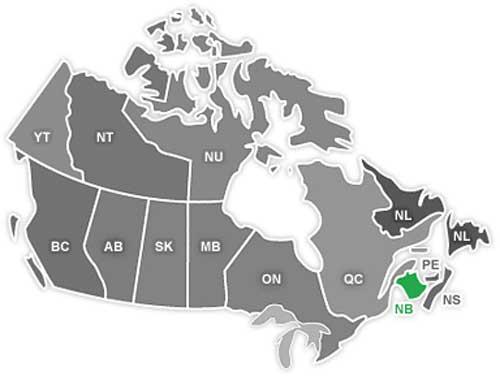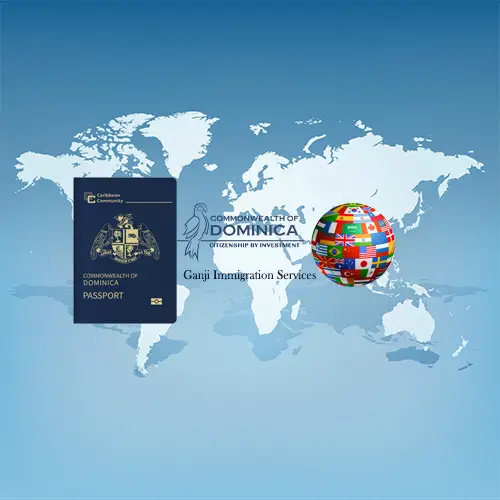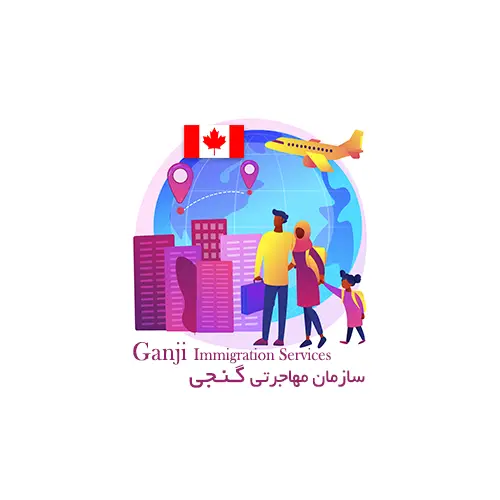
New Brunswick-Fredericton
New Brunswick is one of Canada's three Maritime Provinces and is bilingual (English–French). It was created as a result of the partitioning of the British Colony of Nova Scotia in 1784. Fredericton is the capital and Saint John is the most populous city. According to nationwide census in 2011, New Brunswick had an estimated population of 751,171. The majority of the population is English-speaking, but there is also a large Francophone minority (33%), chiefly of Acadian origin. The province is named for the city of Braunschweig, formerly known in English as Brunswick, located in modern day Lower Saxony in northern Germany. Braunschweig is the ancestral home of the King George III of the United Kingdom.
Geography of New Brunswick
New Brunswick is bounded on the north Quebec and by Chaleur Bay. The eastern boundary is formed by the Gulf of Saint Lawrence and Northumberland Strait. The southeast corner of the province is connected to the Nova Scotia. The south of the province is bounded by the Bay of Fundy coast. The US state of Maine forms the western boundary.
New Brunswick differs from the other Maritime Provinces physiographically, climatologically, and ethnoculturally. Both Nova Scotia and Prince Edward Island are almost completely surrounded by water. Oceanic effects therefore tend to define their climate, economy, and culture. On the other hand, New Brunswick, although having a significant seacoast, is sheltered from the Atlantic Ocean proper and has a large interior that is removed from oceanic influences. As a result, the climate tends to be more continental in character rather than maritime.
The major river systems of the province include the St. Croix River, Saint John River, Kennebecasis River, Petitcodiac River, Magaguadavic River, Miramichi River, Nepisiguit River, and the Restigouche River. The settlement patterns and the economy of New Brunswick are based more on the province's river systems than its seacoasts.
The total land and water area of the province is 72,908 km2, over 80 percent of which is forested. Agricultural lands are found mostly in the upper St. John River valley, with lesser amounts of farmland in the southeast of the province, especially in the Kennebecasis and Petitcodiac river valleys.
New Brunswick is a rural province with nearly half of the Province's residents living in rural areas. The major urban areas of the province are Greater Saint John and Greater Moncton. Moncton is the largest Metro at 126,424 and Saint John coming in second at 122,389.
In the 2001 Canadian census, the most commonly reported ethnicities were 193,470 French (26.9%); 165,235 English (23.0%); 135,835 Irish (18.9%); 127,635 Scottish (17.7%); 27,490 German (3.8%); 26,220 Acadians (3.6%); 23,815 "North American Indian" (First Nations) (3.3%); 13,355 Dutch (Netherlands) (1.9%); and 7,620 Welsh (1.1%).
Largest municipalities of New Brunswick by population
| Municipality | 2006 | 2001 | 1996 | 1991 |
| 68 043 | 69 661 | 72 494 | 74 969 | |
| 64 128 | 61 046 | 59 313 | 56 823 | |
| 50 535 | 47 560 | 46 507 | 46 466 | |
| 18 565 | 14 951 | 12 497 | 10 650 | |
| 18 129 | 18 508 | 19 241 | 21 165 | |
| 17 832 | 17 010 | 16 653 | 16 270 | |
| 16 643 | 17 373* | 11,033 | 10,835 |
Population of New Brunswick since 1981
| 2011 | 2006 | 2001 | 1996 | 1991 | 1986 | 1981 | Year |
| 751,171 | 729,997 | 729,498 | 738,133 | 723,900 | 709,445 | 696,403 | Population |
History of New Brunswick
The original First Nations inhabitants of New Brunswick were members of three distinct tribes. The largest tribe was the Mi'kmaq, and they occupied the eastern and coastal areas of the province. They were responsible for the Augustine Mound, a burial ground built about 800 B.C. near Metepnákiaq. The western portion of the province was the traditional home of the Wolastoqiyik (Maliseet) people. The smaller Passamaquoddy tribe occupied lands in the southwest of the province.
Although it is possible that Vikings may have reached as far as New Brunswick, the first known European exploration of New Brunswick was that of French explorer Jacques Cartier in 1534, which discovered and named the Bay of Chaleur. The colony relocated the following year across the Bay of Fundy to Port Royal, Nova Scotia. Over the next 150 years, a number of other French settlements were founded in the area occupied by present-day New Brunswick, including along the Saint John River, the upper Bay of Fundy region, in the Tantramar Marshes at Beaubassin, and finally at St. Pierre. The whole maritime region was at that time claimed by France and was designated as the colony of Acadia.
One of the provisions of the Treaty of Utrecht of 1713 was the surrender of peninsular Nova Scotia to the British. The bulk of the Acadian population thus found themselves residing in the new British colony of Nova Scotia. During the French and Indian War (1754–63), the British completed their conquest of Acadia and extended their control to include all of New Brunswick.
After the Seven Years' War, most of present day New Brunswick (and parts of Maine) were absorbed into the colony of Nova Scotia and designated as Sunbury County. In 1784, Britain split the colony of Nova Scotia into three separate colonies: New Brunswick, Cape Breton Island, and present-day peninsular Nova Scotia. There were several actions on New Brunswick soil during the American Revolutionary War: the Maugerville Rebellion (1776), the Battle of Fort Cumberland (1776), the Siege of Saint John (1777) and the Battle at Miramichi (1779). The Battle of Fort Cumberland was the largest and most significant of these conflicts.
During the late 18th and early 19th centuries, some of the deported Acadians from Nova Scotia found their way back to "Acadie," where they settled mostly along the eastern and northern shores of the new colony of New Brunswick. Additional immigration to New Brunswick in the early 19th century was from Scotland; western England; and Waterford, Ireland. A large influx of settlers arrived in New Brunswick after 1845 from Ireland as a result of the Potato Famine. Much of the English Canadian population of New Brunswick is descended from Loyalists who fled the American Revolution.
New Brunswick is one of four original provinces of Canada which entered the Canadian Confederation on July 1, 1867.
Official languages of New Brunswick
New Brunswick is constitutionally bilingual (English–French). According to 2011 Canadian census, New Brunswick's official languages are shown in the Table below.
| 10 | 9 | 8 | 7 | 6 | 5 | 4 | 3 | 2 | 1 |
| Tagalog | Dutch | Spanish | Arabic | German | Korean | Chinese | Míkmaq | French | English |
| 0.08% | 0.13% | 0.16% | 0.18% | 0.25% | 0.25% | 0.25% | 0.42% | 31.91% | 65.58% |
Economy of New Brunswick
New Brunswick's urban areas have modern economies dominated by the health care, educational, retail, finance, and insurance sectors. These sectors are reasonably equitably distributed in all three principal urban centers. In addition, heavy industry and port facilities are found in Saint John; Fredericton is dominated by government services, universities, and the military; and Moncton has developed as a commercial, retail, transportation, and distribution center with important rail and air terminal facilities.
The rural primary economy is best known for forestry, mining, mixed farming, and fishing. Forestry is important in all areas of the province but especially in the heavily forested central regions. There are many sawmills in the smaller towns and large pulp and paper mills located in Saint John, Atholville, Miramichi, Nackawic, and Edmundston.
Heavy metals, including lead and zinc, are mined in the north around Bathurst. One of the world's largest potash deposits is located in Sussex; a second potash mine, costing over a billion dollars, is in development in the Sussex region. Oil and natural gas deposits are also being developed in the Sussex region.
Farming is concentrated in the upper Saint John River valley (in the northwest portion of the province), where the most valuable crop is potatoes. Mixed and dairy farms are found elsewhere, but especially in the southeast, concentrated in the Kennebecasis and Petitcodiac river valleys.
The most valuable fish catches are lobster, scallops and king crab. The farming of Atlantic salmon in the Passamaquoddy Bay region is an important local industry.
The largest employers in the province are the Irving group of companies, several large multinational forest companies, the government of New Brunswick, and the McCain group of companies.
Government of New Brunswick
New Brunswick has a unicameral legislature with 49 seats. Elections are held at least every five years, but may be called at any time by the Lieutenant Governor on consultation with the Premier. The Premier is the leader of the party that holds the most seats in the legislature.
There are two dominant political parties in New Brunswick, the Liberal Party and the Progressive Conservative Party. While consistently polling approximately 10% of the electoral vote since the early 1980s, the New Democratic Party has elected few members to the Legislative Assembly. From time to time, other parties, such as the Confederation of Regions Party, have held seats in the legislature, but only on the strength of a strong protest vote.
The dynamics of New Brunswick politics are different from those of other Canadian provinces. The lack of a dominant urban Center in the province means that the government has to be responsive to issues affecting all areas of the province. In addition, the presence of a large Francophone minority dictates that consensus politics is necessary, even when there is a majority government present. In this manner, the ebb and flow of New Brunswick provincial politics parallels the federal stage.
New Brunswick Most Important Cities
Saint John: Saint John is the largest city in New Brunswick and the second largest city in the Maritime Provinces. It is known as the Fundy City due to its location on the north shore of the Bay of Fundy at the mouth of the Saint John River, as well as being the only city on the bay. In 1785 Saint John became the first incorporated city in Canada.
Saint John had a population of 70,063 in 2011 over an area of 315.82 km2. The Saint John metropolitan area covers a land area of 3,362.95 km2across the Caledonia Highlands, with a population (as of 2011) of 127,761 making it the second largest CMA in New Brunswick behind Moncton.
The climate of Saint John is humid continental. The Bay of Fundy never fully freezes, thus moderating the winter temperatures compared with inland locations. Even so, with the prevailing wind blowing from the west, the average January temperature is about −8.2 °C. Summers are usually warm to hot, and daytime temperatures often exceed 25 °C.
Economy of Saint John was based on shipbuilding at the city's dry dock which was one of the largest in the world. Since 2003 shipbuilding has ended on the scale it once was forcing the city to adopt a new economic strategy. Saint John still maintains industrial infrastructure in the city's east side such as Canada's largest oil refinery. Wealthy industrialist K.C. Irving and his family built an industrial conglomerate in the city during the 20th century with interests in oil, forestry, shipbuilding, media and transportation. Irving companies remain dominant employers in the region with North America's first deep water oil terminal, a pulp mill, a paper mill and a tissue paper plant.
Moncton: Moncton is a Canadian city located in southeastern New Brunswick. Situated in the Petitcodiac River Valley, Moncton lies at the geographic center of the Maritime Provinces. The city has earned the nickname "Hub City" because of its central location and also because Moncton has historically been the railway and land transportation hub for the Maritimes.
The city proper has a population of 69,074 (2011) and covers 142 km2. Although the Moncton area was originally settled in 1733, Moncton is considered to have been officially founded in 1766 with the arrival of Pennsylvania Dutch immigrants from Philadelphia. Initially an agricultural settlement, Moncton was not incorporated until 1855. The city was named for Lt. Col. Robert Monckton, the British officer who had captured nearby Fort Beauséjour a century earlier. A significant wooden shipbuilding industry had developed in the community by the mid-1840s, allowing for the civic incorporation in 1855, but the shipbuilding economy collapsed in the 1860s, causing the town to subsequently lose its civic charter in 1862. Moncton regained its charter in 1875 after the community's economy rebounded, mainly due to a growing railway industry. In 1871, the Intercolonial Railway of Canada had chosen Moncton to be its headquarters, and Moncton remained a railroad town for well over a century until the closure of the Canadian National Railway (CNR) locomotive shops in the late 1980s.
Although the economy of Moncton was traumatized twice—by the collapse of the shipbuilding industry in the 1860s and by the closure of the CNR locomotive shops in the 1980s—the city was able to rebound strongly on both occasions. The city adopted the motto Resurgo after its rebirth as a railway town. At present, the city's economy is stable and diversified, primarily based on its traditional transportation, distribution, retailing, and commercial heritage, but also supplemented by strength in the educational, health care, financial, information technology, and insurance sectors. The strength of the economy has received national recognition and the local unemployment rate is consistently less than the national average.
Fredericton: Fredericton is the capital of the Canadian province of New Brunswick. The city is situated in the west-central portion of the province along the Saint John River, which flows west to east as it bisects the city; it is the dominant natural feature of the area. One of the main urban centers in New Brunswick, the city had a population of 56,224 in the 2011 census. It is the third-largest city in the province after Saint John and Moncton.
An important cultural, artistic, and educational center for the province, Fredericton is home to two universities, the New Brunswick College of Craft and Design, and cultural institutions such as the Beaverbrook Art Gallery, the Fredericton Region Museum, and The Playhouse, a performing arts venue. The city hosts the annual Harvest Jazz & Blues Festival, attracting regional and international jazz, blues, rock, and world artists. Fredericton is also an important and vibrant center point for the region’s top visual artists, many of New Brunswicks notable artists live and work there today. Fredericton has also been home to some great historical Canadian painters as well including, Goodridge Roberts, Molly and Bruno Bobak.
The 19th and early 20th centuries, the lumber industry - with its corresponding mills - was a primary sector of Fredericton's economy. Over the course of the 20th century, this industry declined and gave way to the provincial government and the universities becoming the primary employers in the city. As a provincial capital, its economy is inextricably tied to the fortunes of the public sector; however, the city also contains a growing IT and commercial sector. The city has the highest percentage of residents with a post-secondary education in the province and one of the highest per capita incomes.
Fredericton has been evaluated favorably in recent years for its competitive quality of life and potential for business development. In 2013, Foreign Direct Investment magazine reviewed Fredericton's economic potential and quality of life, and named it first amongst North America's Top 10 Micro Cities, improving from its second-place rank in 2011. Amongst 200 Canadian communities, Fredericton placed seventh in MoneySense magazine's Best Places to live in 2012, but dropped to 78th in 2013.
Fredericton has a humid continental climate. The average January low temperature is -16 °C, while the average high in July high is 26 °C. On average, Fredericton receives approximately 1100 mm of precipitation per year. Snowfall is common between late November and early April, and snow usually stays on the ground beginning in December.
Education in New Brunswick
Public education in the province is administered by the Department of Education, a department of the Government of New Brunswick. New Brunswick has a comprehensive parallel system of Anglophone and Francophone public schools providing education to both the primary and secondary levels. These schools are segregated by government decree. The English system developed out of a mixture of the British and American systems, reflecting the Loyalist background of so many early settlers. There are also secular and religious private schools in the province.
The New Brunswick Community College system has campuses in all regions of the province. This comprehensive trade school system offers roughly parallel programs in both official languages at either Francophone or Anglophone campuses. Each campus, however, tends to have areas of concentration to allow for specialization. There are also a number of private colleges for specialised training in the province, such as the Moncton Flight College, one of the top pilot-training academies in Canada.
There are four publicly funded secular universities and four private degree-granting institutions with religious affiliation in the province. The two comprehensive provincial universities are the University of New Brunswick and the Université de Moncton. These institutions have extensive postgraduate programs and Schools of Law. Medical education programs have also been established at both the Université de Moncton and at UNBSJ in Saint John (although affiliated with Universite de Sherbrooke and Dalhousie University respectively). Mount Allison University in Sackville is currently ranked as the best undergraduate liberal arts university in Canada and has produced 51 Rhodes Scholars, more than any other liberal arts university in the Commonwealth.










